Bipolar disorders are a cluster of psychiatric conditions that profoundly shadow the lives of those affected. Many individuals with bipolar disorder often do not receive a correct diagnosis until approximately 6 to 10 years after their initial contact with a healthcare provider, even though they exhibit clinical symptoms.
Despite the long-standing recognition of their symptoms, the diagnostic criteria for bipolar disorders have evolved, making the diagnosis challenging.
Medical professionals use a standardized classification system to understand and address this condition. This system, known as the International Classification of Diseases, 10th Edition, or ICD-10, provides codes for various medical conditions.
Key Takeaways:
The ICD-10 coding system succeeded ICD-9 on October 1, 2015, with code F31 classifying bipolar disorder, a provision by the World Health Organization (WHO) under Mental, Behavioral, and Neurodevelopmental Disorders.
Each unique ICD-10 code related to bipolar disorder defines specific aspects of this complicated condition. These codes categorize and distinguish various bipolar disorder types and manifestations, ensuring precise diagnoses and meticulous record-keeping.
The bipolar episodes include elevated mood and heightened energy (hypomania or mania) and lowered mood with decreased energy (depression). A bipolar diagnosis requires experiencing a minimum of two such episodes.
Precision in ICD-10 coding is crucial for effective treatment and insurance-related matters.
ICD-10 codes for bipolar disorder receive periodic updates to align with evolving clinical practices, technology, and the understanding of the condition.
What Are the ICD-10 Codes for Bipolar Disorder?
The transition from the Diagnostic and Statistical Manual of Mental Disorders, Fifth Edition (DSM-5) in 2013 brought about revisions to the codes for bipolar I and bipolar II disorders. After extensive revisions and adjustments, the ICD-10 coding system took over from the ICD-9 code set on October 1, 2015. The ICD-10 code F31 for bipolar disorder is a classification provided by the World Health Organization (WHO) under the Mental, Behavioral, and Neurodevelopmental Disorders range.
The shift to the ICD-10 system aimed to achieve several essential objectives:
Enhance Specificity: The ICD-10 system sought to increase the specificity of diagnoses, allowing for more precise identification of various medical conditions, including bipolar disorder.
Stay Current: With the rapid changes in clinical practices and advancements in medical technology, the transition aimed to ensure that the coding system remained up to date.
Improve Tracking: The ICD-10 system aimed to enhance the tracking of different health conditions, facilitating better monitoring and analysis.
What Do the Specific Codes Represent?
Each specific ICD-10 code for bipolar disorder represents a distinct aspect of this complex condition. These codes categorize and differentiate various types and manifestations of bipolar disorder, allowing for accurate diagnosis and precise record-keeping.
The specific codes under ICD-10 provide valuable information about the following aspects:
Bipolar I Disorder (F31.0 - F31.9): These codes are dedicated to bipolar I disorder, characterized by manic or mixed episodes that last for at least a week and often alternate with partial remission of depressive episodes.
Bipolar II Disorder (F31.81): Bipolar II disorder involves a pattern of depressive and hypomanic episodes, which are less severe than the manic episodes seen in bipolar I disorder. The unique code F31.81 distinguishes this specific disorder, bipolar type, from others.
Other Bipolar Disorders (F31.89): This code covers other bipolar disorders that don't fit precisely into the categories of bipolar I or II. These may include subthreshold presentations or conditions with atypical features.
Unspecified Bipolar Disorder (F31.9): Sometimes, a diagnosis may not fit neatly into one of the specific categories. The code F31.9 is used for cases where the exact nature of the bipolar disorder is not further specified.
How Do Codes Differ for Various Types of Bipolar Disorder?
The ICD-10 codes for bipolar disorder serve as a valuable tool for healthcare professionals. These codes allow clinicians to tailor their diagnostic and treatment strategies based on each patient's unique presentation and severity of the condition.
Bipolar I Disorder (F31.0 - F31.9): The specific code within this range signifies the severity and features of the condition, allowing clinicians to precisely identify the nature of the bipolar I disorder, whether it's a current manic episode (F31.1), a current mixed episode (F31.2), or another presentation.
Bipolar II Disorder (F31.81): The unique code F31.81 specifically represents bipolar II disorder, making it easier for healthcare providers to recognize this particular form of bipolar disorder.
Other Bipolar Disorders (F31.89): This category accommodates variations in the presentation of bipolar-like symptoms, ensuring that these cases are not overlooked or inappropriately categorized.
Unspecified Bipolar Disorder (F31.9): It acknowledges that while bipolar features are present, the exact classification might be less evident or require further evaluation.
What Are the Diagnostic Criteria for Bipolar Disorder According to ICD-10?
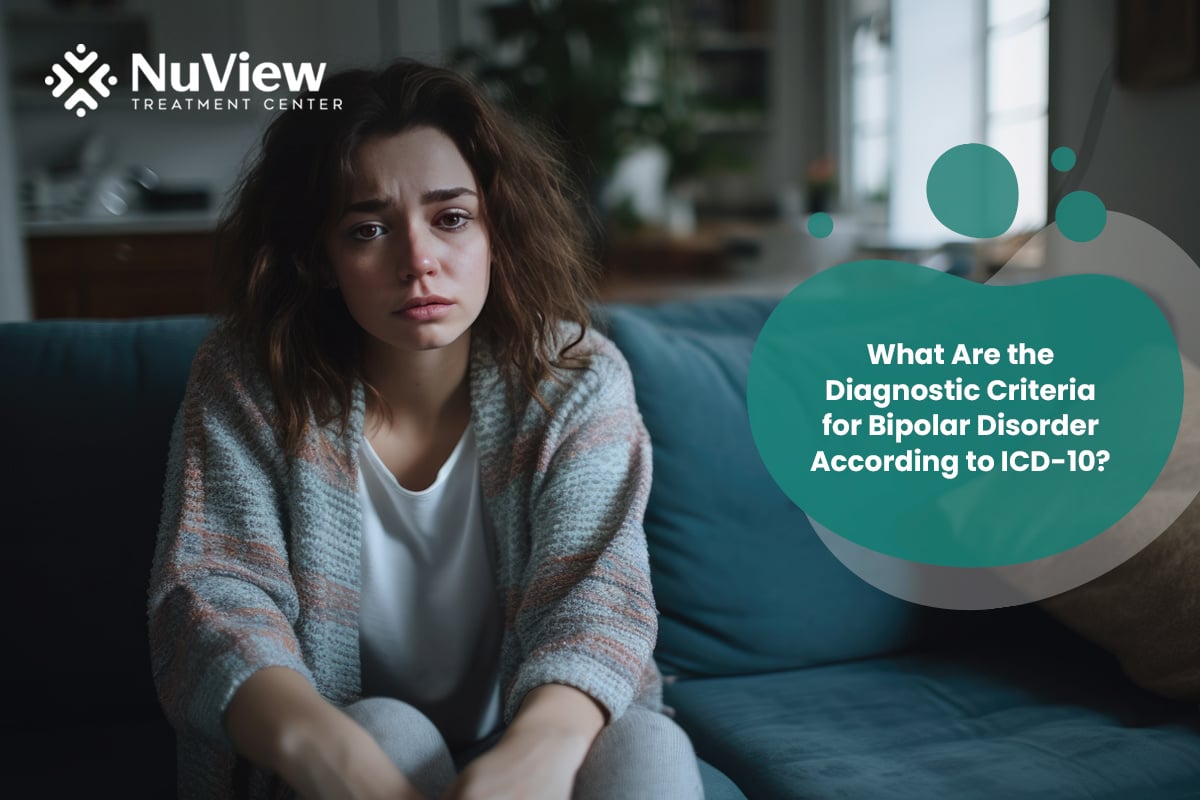
Bipolar disorder is characterized by recurrent episodes in which an individual's mood and activity levels experience significant disturbances. To meet the criteria for a bipolar disorder diagnosis, an individual must have experienced at least two manic-depressive episodes.
Now, let's delve into the specific ICD-10 codes that correspond to different aspects of bipolar disorder:
F31.0 Bipolar Affective Disorder, Current Episode Hypomanic:
This code is assigned when an individual is currently experiencing a hypomanic episode and has had at least one other affective episode (such as hypomanic, manic, depressive, or mixed) in the past.
F31.1 Bipolar Affective Disorder, Current Episode Manic Without Psychotic Symptoms:
If a patient is currently in a manic episode without psychotic symptoms and has had at least one other affective episode in the past, this code is used.
F31.2 Bipolar Affective Disorder, Current Episode Manic With Psychotic Symptoms:
This code applies when a patient is currently experiencing a manic episode with psychotic symptoms and has a history of at least one other affective episode.
F31.3 Bipolar Affective Disorder, Current Episode Mild or Moderate Depression:
This code is used when a patient is currently experiencing a mild to moderate depressive episode and has a history of at least one authenticated hypomanic, manic, or mixed affective episode.
F31.4 Bipolar Affective Disorder, Current Episode Severe Depression With No Psychotic Symptoms:
This code is assigned if a patient is currently experiencing a severe depressive episode without psychotic symptoms and has a history of at least one authenticated hypomanic, manic, or mixed affective episode.
F31.5 Bipolar Affective Disorder, Current Episode Severe Depression With Symptoms of Psychosis:
This code is used when a patient is experiencing a severe depressive episode with psychotic symptoms and has a history of at least one documented hypomanic, manic, or mixed affective episode.
F31.6 Bipolar Affective Disorder, Current Episode Mixed:
This code applies when a patient has a history of at least one authenticated hypomanic, manic, depressive, or mixed affective episode and is currently exhibiting a mixture or rapid alteration of manic and depressive symptoms.
F31.7 Bipolar Affective Disorder, Currently in Remission:
This code is assigned when a patient has a history of at least one authenticated hypomanic, manic, or mixed affective episode and at least one other affective episode but is not currently experiencing significant mood disturbances.
F31.8 Other Bipolar Affective Disorders:
This code may apply to conditions such as Bipolar II disorder, recurrent depressive disorder, or manic episodes not otherwise specified (NOS).
F31.9 Bipolar Affective Disorder, Unspecified:
This code is used when the specific type of bipolar affective disorder is not specified, often called manic depression NOS.
What Symptoms Are Required for Diagnosis?
Bipolar disorder is primarily marked by mood episodes, which encompass periods of elevated energy and activity levels, referred to as mania. During manic episodes, individuals often experience heightened moods, increased self-confidence, and a surge in creativity.
However, alongside these positive aspects, they might also exhibit impulsive or risky behaviors, such as excessive spending or substance abuse.
Conversely, depressive episodes present an entirely different emotional state characterized by persistent sadness, feelings of hopelessness, and a profound lack of energy. People in a depressive state frequently lose interest in activities they once enjoyed and may even struggle with thoughts of self-harm or suicide. These episodes often bring sleep disturbances and changes in appetite.
How Does ICD-10 Criteria Compare with Other Diagnostic Systems?
Comparing ICD-10 criteria with the DSM reveals significant differences in origin, focus, and accessibility. The ICD, overseen by a global health agency, prioritizes reducing the global burden of mental disorders. Its development process, catering to 193 WHO member countries, emphasizes comprehensiveness and multilingualism.
In contrast, the DSM, established by a U.S. professional association, primarily serves American psychiatrists. It follows a distinct approval process, gaining endorsement from the World Health Assembly, representing all WHO member countries, while the DSM's approval comes from the American Psychiatric Association.
The key distinction lies in the distribution and accessibility of these diagnostic systems. The ICD is broadly available at low costs, offering significant discounts for low-income countries and free internet access. Conversely, the DSM generates substantial revenue for the American Psychiatric Association, not just from book sales but also through related products and copyright permissions.
Get Started With Nuview Treatment Center
Our dedicated professional staff is here to guide you or your loved one on the journey to lasting recovery, offering support every step of the way.
How Are Manic and Depressive Episodes Categorized in ICD-10?
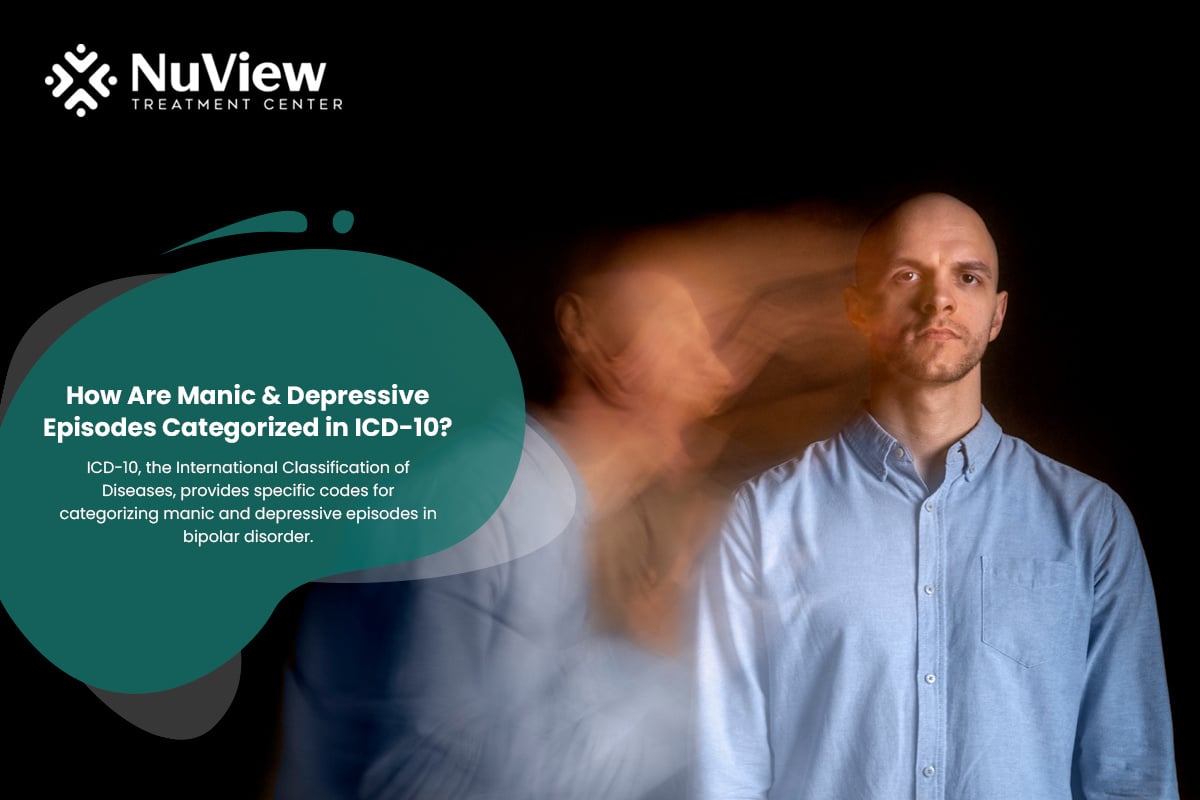
ICD-10, the International Classification of Diseases, provides specific codes for categorizing manic and depressive episodes in bipolar disorder. These codes play a crucial role in accurately diagnosing and managing this condition.
Let's learn how ICD-10 classifies manic and depressive episodes, shedding light on the codes used for each, ensuring a comprehensive understanding of bipolar disorder diagnosis and treatment.
What Codes Are Used for Manic Episodes?
The primary ICD-10 code for manic episodes is F30, which signifies manic and hypomanic episodes. This code is further divided into subcategories to specify the nature and characteristics of the manic episode. These subcategories include:
F30.0 - Hypomania: This code is used when the individual experiences a hypomanic episode, a milder form of mania. During hypomania, the person has elevated energy levels and increased activity, but to a lesser extent than full-blown mania.
F30.1 - Mania Without Psychotic Symptoms: When someone exhibits manic behavior without psychotic symptoms, such as hallucinations or delusions, the F30.1 code is utilized.
F30.2 - Mania With Psychotic Symptoms: If a bipolar disorder single manic episode involves psychotic features like hallucinations or delusions, the F30.2 code is applied.
What Codes Are Used for Depressive Episodes?
The primary ICD-10 code for depressive episodes is F32, which encompasses various depressive states. Within this category, different subcodes specify the nature and severity of the depressive episode. These subcodes include:
F32.0 - Mild Depressive Episode: This code is applied when an individual experiences a depressive episode with mild symptoms. Symptoms in a mild episode may cause distress but usually do not severely disrupt daily functioning.
F32.1 - Moderate Depressive Episode: When the depressive episode is of moderate severity, the F32.1 code is used. Moderate episodes typically involve more pronounced symptoms significantly affecting daily life and functioning.
F32.2 - Severe Depressive Episode Without Psychotic Symptoms: This code is used when a person has a severe depressive episode but does not exhibit psychotic symptoms like hallucinations or delusions.
F32.3 - Severe Depressive Episode With Psychotic Symptoms: When a severe major depressive disorder recurrent episode is accompanied by psychotic features, such as hallucinations or delusions, the F32.3 code is utilized.
Why Is Accurate Coding Important for Treatment and Insurance?
Accurate coding under the ICD-10 system is vital for effective treatment and insurance matters. It serves several critical purposes:
Proper coding ensures that healthcare providers accurately diagnose and document a patient's condition.
ICD-10 codes help clinicians design tailored treatment plans. For individuals with bipolar disorder, distinct codes for manic and mild major depressive disorder single episodes guide healthcare professionals in addressing specific symptoms and their severity.
Accurate coding aids in selecting appropriate medication for mental health disorders. Different phases of bipolar disorder may require distinct pharmacological interventions, and precise coding helps determine the right course of treatment.
Insurance companies rely on ICD-10 codes to assess claims. Accurate coding ensures that treatment costs are covered, preventing potential claim denials or disputes.
Proper coding enhances the quality of care by facilitating more accurate and comprehensive patient records. This, in turn, contributes to better-informed decisions and improved treatment quality.
It enables researchers to study the condition's prevalence, course, and outcomes, leading to advancements in treatment and understanding.
How Do ICD-10 Codes Influence Treatment Plans?
CD-10 codes significantly impact treatment plans for bipolar disorder. They assist healthcare professionals in:
Identifying bipolar phases, differentiating between manic, depressive, and mixed episodes.
Determining the severity of depressive episodes to select appropriate treatment options.
Monitoring progress and adapting treatment plans as needed.
Optimizing medication management by distinguishing between manic and depressive episodes.
Ensuring compliance with insurance requirements to facilitate coverage for treatment.
What Is the Role of ICD-10 Codes in Insurance Claims?
ICD-10 codes are crucial in the insurance claims process for individuals with bipolar disorder. They help validate claims, determine the extent of insurance coverage, and prevent claim denials. Healthcare providers also rely on these codes for billing accuracy. ICD-10 codes are also essential for insurance companies to authorize timely treatment.
Get Started With Nuview Treatment Center
How Often Are ICD-10 Codes Updated for Bipolar Disorder?
The updates to the ICD-10 codes occur periodically, and the exact timing can vary. Healthcare authorities and organizations monitor developments in psychiatry and update the codes as needed to reflect changes in clinical practices, research, and understanding of bipolar disorder.
Healthcare professionals must stay informed about these updates to ensure accurate diagnosis and appropriate treatment.
What Are the Latest Updates or Changes?
ICD-10 codes for bipolar disorder are updated periodically to reflect changes in clinical practices, technology, and understanding of the condition.
F31.0 Bipolar Disorder, Current Episode Hypomanic: For milder hypomanic episodes.
F31.1 Bipolar Disorder, Current Episode Manic Without Psychotic Features: Used for manic episodes without psychosis.
F31.2 Bipolar Disorder, Current Episode Manic Severe With Psychotic Features: For severe mania with psychosis.
F31.3 Bipolar Disorder, Current Episode Depressed, Mild or Moderate Severity: Depressive episodes of mild to moderate intensity.
F31.4 Bipolar Disorder, Current Episode Depressed, Severe, Without Psychotic Features: Severe depression with no psychosis.
F31.5 Bipolar Disorder, Current Episode Depressed, Severe, With Psychotic Features: Extreme depression with psychosis.
F31.6 Bipolar Disorder, Current Episode Mixed: Mixed episodes, combining manic and depressive symptoms.
F31.7 Bipolar Disorder, Currently in Remission: When the individual is not experiencing significant mood disturbance.
F31.8 Other Bipolar Disorders: For specific bipolar disorder conditions not covered elsewhere.
F31.9 Bipolar Disorder, Unspecified: For cases not fitting into specific subcategories.
How Do These Updates Impact Diagnosis and Treatment?
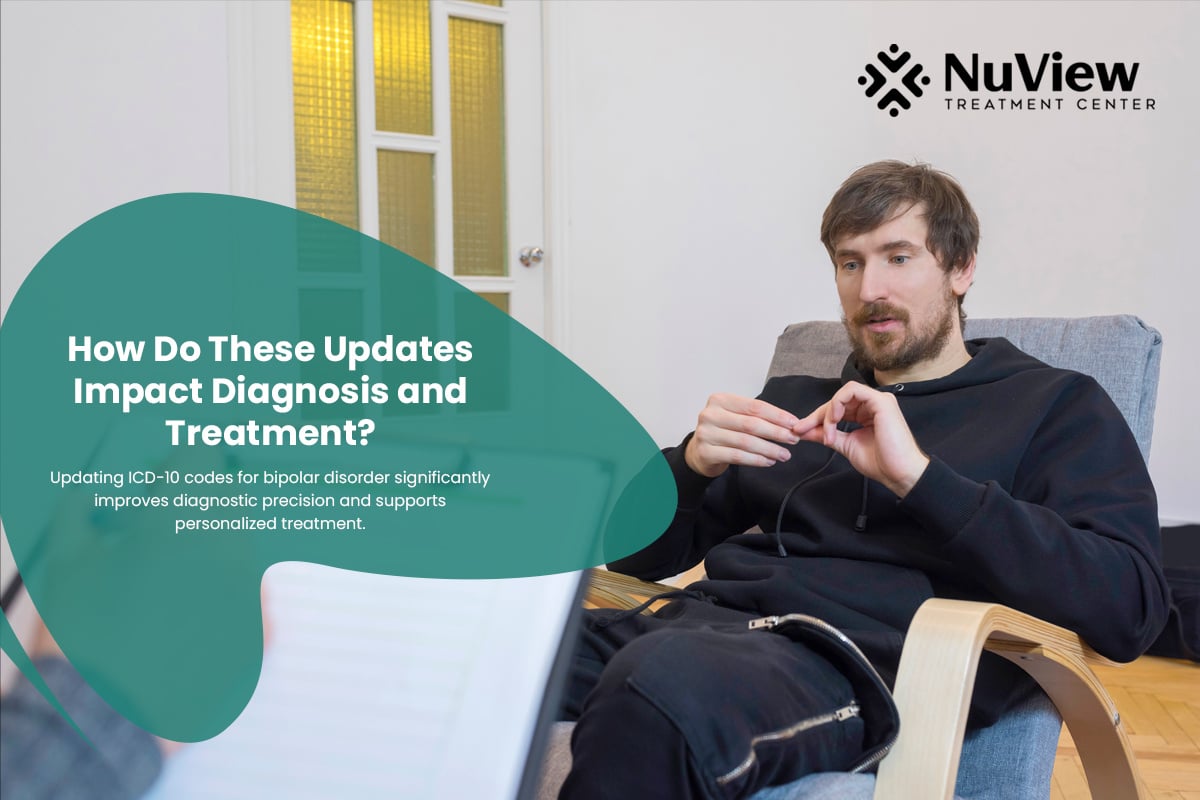
Updating ICD-10 codes for bipolar disorder significantly improves diagnostic precision and supports personalized treatment. Clinicians can more accurately differentiate between phases and severity levels, enhancing patient interventions and medication management.
These updates also streamline the insurance claims process, ensuring individuals receive the necessary financial support for their bipolar disorder treatment.
Are There Controversies or Limitations in the ICD-10 Classification of Bipolar Disorder?
The ICD-10 classification of bipolar disorder has faced several controversies and limitations over the years.
These controversies and limitations shed light on the need for ongoing refinement and adaptation of diagnostic systems to serve individuals struggling with bipolar disorder.
What Are Common Criticisms of ICD-10 Criteria?
Common criticisms of the ICD-10 criteria include its complexity and potential for misdiagnosis due to varied individual symptom presentations. The ICD-10 may not always capture the full spectrum of bipolar symptoms, leading to challenges in providing a comprehensive diagnosis and treatment plan.
Are There Challenges in Global Standardization?
One of the significant challenges associated with the ICD-10 is global standardization. While it aims to provide a uniform system for classifying diseases, differences in its implementation across countries and healthcare settings can lead to consistency in diagnosis and treatment.
This lack of standardization hinders international collaboration and research efforts, potentially limiting advancements in understanding and managing bipolar disorder.
How Do Healthcare Professionals Use ICD-10 Codes in Practice?
Healthcare professionals use ICD-10 codes as a standard language to communicate information about a patient's bipolar disorder. These codes serve as a diagnostic tool that helps clinicians accurately categorize the patient's condition, distinguishing between manic, depressive, and mixed episodes.
What Is the Process for Assigning Codes?
Assigning ICD-10 codes for bipolar disorder involves a systematic process. Healthcare providers assess the patient's clinical presentation, review their medical history, and apply the specific code that best represents the current phase of bipolar disorder. This process helps personalize treatment strategies and medication selection.
How Is Coding Used in Medical Records and Documentation?
ICD-10 codes are integral to medical records and documentation. They are included in a patient's medical history, ensuring that future healthcare professionals understand their condition and treatment history. These codes provide a concise way to document the course of bipolar disorder, allowing for seamless communication between healthcare providers.
How Do ICD-10 Codes for Bipolar Disorder Compare to DSM-5 Codes?
Bipolar disorder ICD-10 codes align with DSM-5 codes but offer a broader, internationally recognized system. The DSM-5 primarily focuses on the diagnostic and statistical manual for mental disorders and is widely used within the United States, whereas ICD-10 is a globally accepted coding system.
- What Are the ICD-10 Codes for Bipolar Disorder?
- What Are the Diagnostic Criteria for Bipolar Disorder According to ICD-10?
- How Are Manic and Depressive Episodes Categorized in ICD-10?
- Why Is Accurate Coding Important for Treatment and Insurance?
- How Often Are ICD-10 Codes Updated for Bipolar Disorder?
- Are There Controversies or Limitations in the ICD-10 Classification of Bipolar Disorder?
- How Do Healthcare Professionals Use ICD-10 Codes in Practice?
- Navigating Bipolar Disorder with NuView Treatment Center
- What Are the ICD-10 Codes for Bipolar Disorder?
- What Are the Diagnostic Criteria for Bipolar Disorder According to ICD-10?
- How Are Manic and Depressive Episodes Categorized in ICD-10?
- Why Is Accurate Coding Important for Treatment and Insurance?
- How Often Are ICD-10 Codes Updated for Bipolar Disorder?
- Are There Controversies or Limitations in the ICD-10 Classification of Bipolar Disorder?
- How Do Healthcare Professionals Use ICD-10 Codes in Practice?
- Navigating Bipolar Disorder with NuView Treatment Center
Get Help Today!
Jain A, Mitra P. Bipolar Disorder. [Updated 2023 Feb 20]. In: StatPearls [Internet]. Treasure Island (FL): StatPearls Publishing; 2023 Jan-. Available from: https://www.ncbi.nlm.nih.gov/books/NBK558998/
Brieler, J. A., & Keegan-Garrett, E. (2022). Diagnosis and Treatment of Bipolar Illness in the Primary Care Office. Missouri medicine, 119(3), 213–218.
Severus, E., & Bauer, M. (2013). Diagnosing bipolar disorders in DSM-5. International journal of bipolar disorders, 1, 14. https://doi.org/10.1186/2194-7511-1-14
Kusnoor, S. V., Blasingame, M. N., Williams, A. M., DesAutels, S. J., Su, J., & Giuse, N. B. (2019). A narrative review of the impact of the transition to ICD-10 and ICD-10-CM/PCS. JAMIA open, 3(1), 126–131. https://doi.org/10.1093/jamiaopen/ooz066
Everyone is Welcome Here and We All Have Your Back
Your healing journey deserves a personalized approach. At NuView, we integrate expertise in behavioral therapy, mental health, and substance use treatment to create a customized recovery plan tailored to your unique needs.
Connect with our Admissions Specialists today.
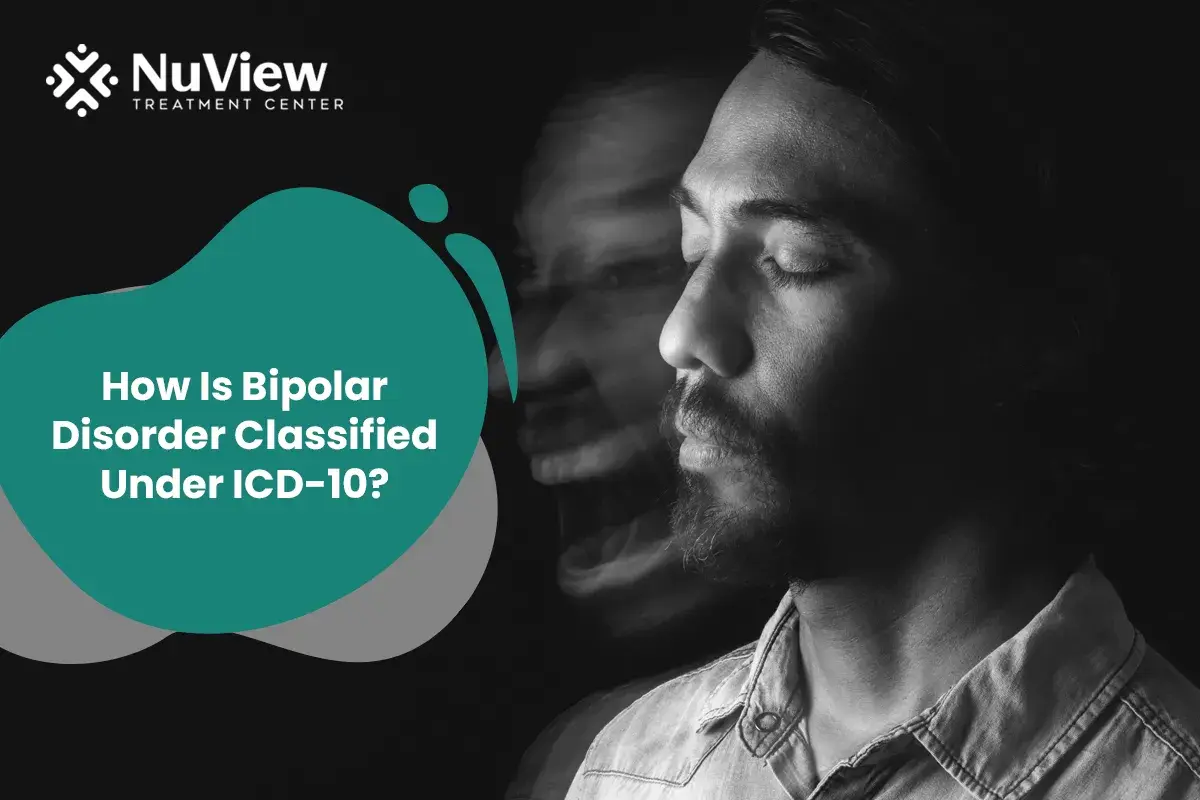

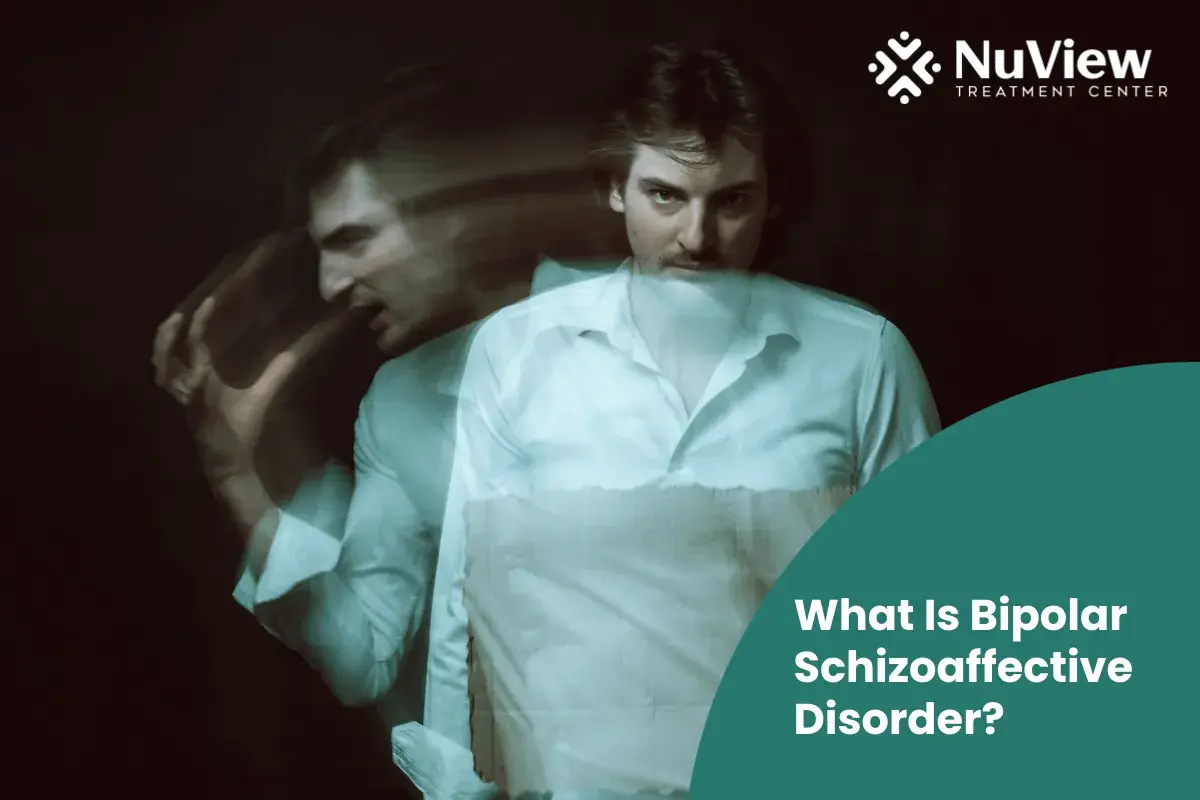
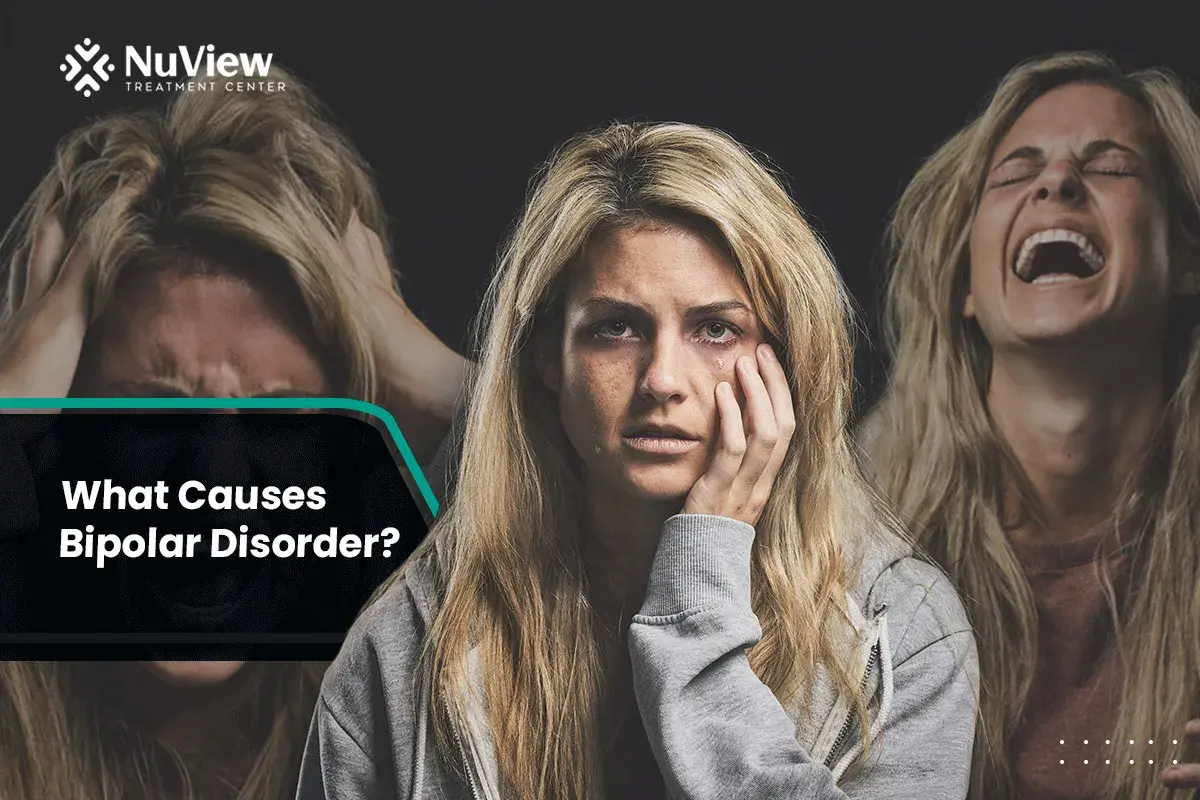



Written By
Dr. Ryan Peterson